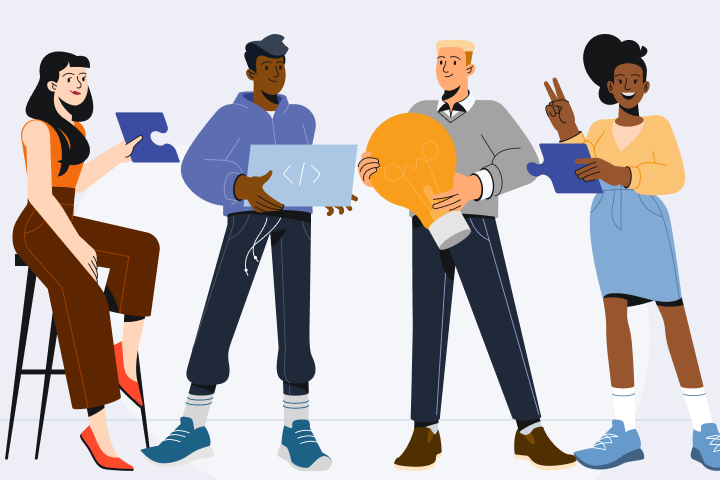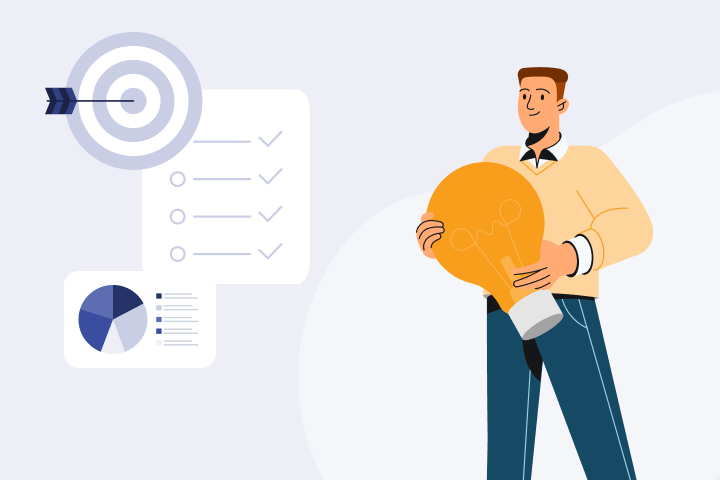If there was a way to attract and retain the best talent in your industry without having to spend a fortune on recruitment fees or marketing campaigns, wouldn’t you do it? That’s what employer branding is in a nutshell.
You can create a positive reputation for your company by deploying employer branding initiatives for employee engagement, employee satisfaction, and employee advocacy. Having a positive brand reputation will help attract more qualified candidates, reduce your time to hire, and decrease employee churn.
Some of the best employer branding companies, such as SAP, Salesforce, Zappos, HubSpot, and Google, have earned their reputations by working tirelessly to cultivate and communicate their employee value proposition. They know you can’t just change your employer brand with the brush of a magic wand. You need to put in the work.
The journey to refine and perfect your employer brand might seem daunting, but with the right strategies, your company can shine. In this article, we will guide you through some standout employer branding strategies, enriched with real-life examples. Let’s get started!
What Is Employer Branding, and Why Does It Matter?
So, what is employer branding and why does it matter?
Employer branding is the reputation you have as an employer in the eyes of your employees, potential hires, and stakeholders. If you’re still on the fence about why you need to invest in employer branding, well, the employer branding statistics speak for themselves.
Talent Board’s research report found that the top recruiting priorities were candidate experience (38%), diversity and inclusion (37%), and employee referrals (37%). Your employer branding comprises all of these factors and more.

Source: PR Newswire
It’s not just recruiting that you need to worry about. Less than 40% of employees are very satisfied with their current employer, and out of those who are, nearly 60% are either searching or open to a new job. Retaining the best talent in this competitive job market requires creating an emotional connection between your company and its employees. You have to think beyond compensation and focus on employer branding strategies.
While employer branding might appear to be a tool to boost your company's reputation, there's a lot more depth to it. It’s important to understand that every organization's employer brand is as unique as its fingerprint. It's shaped by various aspects, from leadership style and organizational culture to work-life balance and employee growth opportunities.
For instance, consider Google's emphasis on innovation. They aren't just promoting a work culture — they're advertising a lifestyle, a mindset. This commitment to fostering creativity and out-of-the-box thinking resonates deeply with potential candidates who are looking for more than just a paycheck. They're looking for a platform that allows (and encourages) them to innovate, collaborate, and create.
If you’re looking to build your employer branding strategy, you may wonder what it includes and where to start. While there is no single list, it typically consists of a range of efforts, including:
Defining Company Culture and Values
At the heart of every great company is a well-defined culture and set of values. Before you can promote what's special about your company, you need to identify and articulate it. This involves introspection and consultation.
Ask yourself (and your team) these questions:
- What principles guide us?
- What behaviors and attitudes do we celebrate?
- What is the process for giving and receiving feedback?
- How do you/we acknowledge employee success?
- What is our commitment to diversity, equity, and inclusion?
The goal is to determine what sets your company apart from others.
Communicating the Employer Value Proposition (EVP)
The employer value proposition (EVP) is essentially the promise a company makes to its employees. It's a blend of benefits, culture, career prospects, and work environment. It answers the crucial question every potential employee has: "What's in it for me?"
Beyond listing perks and salaries, it delves into the intangible rewards of working at the company like growth opportunities, recognition, or the chance to work on groundbreaking projects.
Creating a Positive Employee Experience
A positive employee experience encompasses every interaction an employee has with the company — from the recruitment process, onboarding, and training, to daily tasks, and even their exit.

It's about ensuring that employees have the tools they need, fostering a work environment where they feel valued, and providing them with avenues for growth and learning.
Encouraging Employee Advocacy
Your employees are your best brand ambassadors. When they have positive experiences at work, they naturally want to share them with their peers, friends, and family. Encouraging employee advocacy means harnessing this organic promotion.
Whether it's sharing their work achievements on LinkedIn, posting about a team outing on Instagram, or recommending the company to a friend, these genuine endorsements are invaluable.
Monitoring and Measuring Employer Branding Efforts
As with any strategy, your employer branding efforts need consistent monitoring and evaluation. Are your initiatives yielding the desired results? Are you attracting the right talent? How's the retention rate?
Feedback tools, surveys, and analytics can provide insights into what's working and where improvements are needed.
When you have all of these components in place driving a strong employer brand, you'll be able to:
- Attract more qualified candidates.
- Reduce your time to hire.
- Increase employee engagement.
- Increase employee satisfaction.
- Reduce turnover.
- Improve your company's bottom line.
Best Employer Branding Examples
Have you ever noticed how certain companies always seem to be named one of the best places to work? That's the magic of top-notch employer branding.
Imagine those brands that make you think, “Wow, it must be amazing to work there!” They've hit the mark in showcasing what makes them special. Beyond their products or services, they're highlighting vibrant work cultures, growth opportunities, and yes, perhaps a fun Friday afternoon tradition or two.
Let's explore how these four giants in the industry set the gold standard. These trailblazers have not only honed their branding but also mastered the art of making employees and potential candidates feel truly valued. Whether it's through engaging social media campaigns, authentic employee testimonials, or showcasing their impactful team events, they're setting the pace for everyone else.
1. SAP
Software company SAP has won several awards for its employer brand. It utilizes a mix of strategies to achieve this, including an employer brand channel with a hashtag (#LifeAtSAP!), working closely with universities to encourage young talent, and communicating in unorthodox ways such as through cartoons.
All of these pieces come together to paint the picture of a unique, authentic, and caring brand. It’s one of the best employer branding examples out there.

Source: Life at SAP
2. Boston Consulting Group (BCG)
A great example of employer branding on LinkedIn comes from Boston Consulting Group (BCG). The company’s LinkedIn page regularly shares insightful information such as this guide to questions you should ask during your job interview.
By sharing such resources, BCG paints a picture of a company that is invested in the success and growth of its potential hires. Plus, with direct links to its careers page, it makes the next steps for interested professionals a breeze. This thoughtful approach underscores its commitment to not just attracting talent but genuinely supporting them from the get-go.

Source: Boston Consulting Group
3. University of Oxford
If you’re looking for creative employer branding examples on LinkedIn, check out the University of Oxford’s posts. Instead of generic posts, they find ways to connect to national holidays and cultural events. During the 2022 World Cup, they posted a mathematical model to predict the football tournament’s outcome.
This was a creative and engaging way to showcase the institution’s intellectual prowess while connecting with the broader community. The approach provided entertainment while reinforcing the university’s reputation as a hub of intelligence and innovation.

Source: University of Oxford
4. Netflix
Another strong example comes from Netflix. Everything from their careers page to their social media is optimized to take you along their company’s journey in a fun, engaging manner. They also go one step further and host a podcast, WeAreNetflix Podcast, where employees talk about life at Netflix.
Here, you can listen to candid chats where employees spill the beans about their day-to-day life, including the highs, the challenges, and everything in between. It's this blend of authenticity and creativity that sets Netflix's branding efforts apart.

Source: We Are Netflix
These four companies are just a few of the many great employer branding examples out there. But, the common theme you’ll find with all of them is their commitment to authenticity and consistency in their employer branding.
Building Your Employer Brand Strategy With GaggleAMP
Building a strong employer brand takes time and effort, but it's worth the investment. It can help companies attract and retain the right talent in competitive job markets. It can also give shape to employee engagement and advocacy efforts.
If you want to craft an incredible employer brand strategy, GaggleAMP is your solution for employee engagement, advocacy, social media marketing, and brand awareness.
Schedule a demo with us today!











